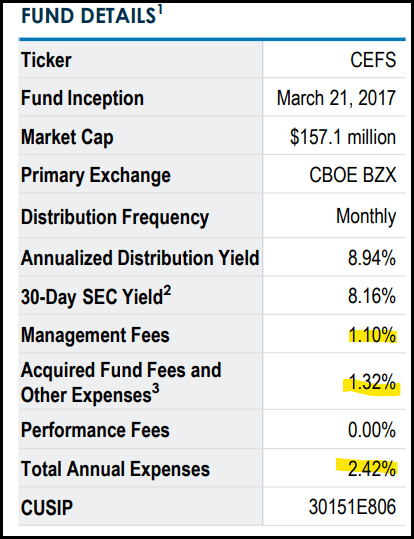The Historical Impact of Monetary Policy on the Stock Market and Gold
February 12, 2024 | by stockcoin.net


“The Historical Impact of Monetary Policy on the Stock Market and Gold” explores the intricate relationship between monetary policy and these two key financial elements. This article provides a comprehensive overview of the history of monetary policy and its influence on the stock market and the precious metal. It acknowledges the current optimism in the market and the trust placed in monetary regulators, while cautioning about the potential risks involved. Additionally, the article posits that gold will only embark on a significant trajectory after the obsolescence of bubble policy. It stresses the importance of employing a “top-down” macro approach to selecting the most favorable stocks within specific sectors during the existence and eventual conclusion of the bubble. Inflationary policies and manipulation are identified as factors that have impacted the market, giving rise to the current bubble. Furthermore, gold is presented as an attractive investment option in the post-bubble era. Various indicators and ratios are analyzed to evaluate the current market situation and the level of associated risk.

Introduction
Monetary policy plays a crucial role in shaping the economy and influencing financial markets. It is the management of money supply and interest rates by central banks to control inflation, stabilize prices, and ensure economic growth. In this article, we will delve into the history of monetary policy, its impact on the stock market and gold, the current bullish market sentiment, associated risks, the role of gold in a post-bubble environment, determining the right stocks and sectors during a bubble, inflationary policies and market manipulation, and the analysis of indicators and ratios to evaluate market conditions and risk levels.
History of Monetary Policy
Monetary policy definition and objectives
Monetary policy refers to the actions, tools, and strategies employed by central banks to manage the money supply and interest rates to achieve specific economic objectives. These objectives typically include maintaining price stability, promoting full employment, and supporting sustainable economic growth.
The primary tools used by central banks in implementing monetary policy are open market operations, reserve requirements, and the adjustment of interest rates. These tools are aimed at influencing the level of money supply in the economy and the cost of borrowing.
Key milestones in the history of monetary policy
The history of monetary policy dates back hundreds of years, with significant milestones marking its evolution. One such milestone is the establishment of the Bank of England in 1694, which became the model for modern central banking. The bank’s role was expanded to include the regulation of interest rates and the issuance of banknotes.
Another significant development was the adoption of the gold standard in the late 19th century. Under the gold standard, currencies were tied to a fixed amount of gold, ensuring stability in exchange rates and limiting the discretion of central banks in monetary policy.
The Great Depression of the 1930s led to a shift in monetary policy towards more active intervention by central banks. This shift was epitomized by the establishment of the Federal Reserve System in the United States in 1913. The Federal Reserve was tasked with providing stability to the financial system and preventing monetary crises.
In modern times, monetary policy has become more data-driven and transparent. Central banks now regularly communicate their policy intentions through forward guidance, which provides markets with insight into future interest rate changes.

Impact of Monetary Policy on the Stock Market
Relationship between monetary policy and stock market
Monetary policy has a significant impact on the stock market. Changes in interest rates and money supply can influence the profitability and valuation of companies, investor sentiment, and ultimately, stock prices.
When central banks lower interest rates, it becomes cheaper for companies to borrow and invest, stimulating economic activity. This increased corporate profitability and economic growth often leads to higher stock prices. Conversely, when interest rates rise, borrowing costs increase, potentially slowing down economic growth and dampening stock market performance.
In addition to interest rates, changes in the money supply can also affect the stock market. When the money supply expands, there is more liquidity available in the market, which can lead to increased buying of stocks. This influx of capital can drive up stock prices. Conversely, a contraction in the money supply can reduce buying capacity, potentially causing a decline in stock prices.
Effect of interest rates on stock prices
Interest rates play a crucial role in determining stock prices. When interest rates are low, investors tend to shift their focus from fixed income assets, such as bonds, to equities. This increased demand for stocks drives up prices. Conversely, when interest rates are high, fixed income assets become more attractive, leading to a decrease in demand for stocks and a potential decline in prices.
It is also important to note that interest rates impact the cost of financing for companies. When borrowing costs are low, companies can invest in growth opportunities, expanding their operations and potentially increasing their earnings. This positive outlook on earnings can lead to higher stock prices.
Influence of money supply on stock market performance
The money supply in an economy plays a crucial role in stock market performance. An increase in the money supply can result in more capital flowing into the stock market, driving up prices. This increased liquidity can create a positive sentiment among investors, encouraging them to invest in stocks.
Conversely, a decrease in the money supply can limit the availability of capital for investment, potentially leading to a decline in stock prices. Reduced liquidity can also dampen investor sentiment, causing them to shift their investments away from stocks and into alternative assets.
Impact of Monetary Policy on Gold
Historical relationship between monetary policy and gold
Gold has long been considered a safe-haven asset and a store of value during times of economic uncertainty. Central banks’ monetary policies can have a significant impact on the price of gold.
During periods of loose monetary policy, characterized by low interest rates and expansionary measures, the value of traditional currencies may depreciate. This can drive investors towards gold as a means to preserve their wealth and hedge against inflation.
Alternatively, during periods of tight monetary policy, where interest rates are raised and liquidity is reduced, the relative attractiveness of gold may diminish. Investors may choose to allocate their funds elsewhere, such as fixed income assets, leading to a potential decline in gold prices.
Effect of interest rates on gold prices
Interest rates have a notable effect on gold prices. In general, when interest rates are low, the opportunity cost of holding gold decreases. Investors are less likely to earn higher returns from fixed income assets, making gold a more attractive investment option.
Conversely, when interest rates rise, the opportunity cost of holding gold increases. Investors may opt for fixed income assets that offer higher yields instead. This shift in investment preference can result in a decline in gold prices.
Influence of inflationary policies on gold prices
Inflationary policies implemented by central banks can also impact the price of gold. During periods of high inflation or the expectation of future inflation, investors often turn to gold as a hedge against erosion of purchasing power.
Inflation erodes the value of traditional currencies, and investors seek assets that can hold their value. Gold, with its limited supply and perceived stability, becomes an attractive option during inflationary periods.
Conversely, when inflation is low or under control, the demand for gold as a hedge against inflation diminishes, potentially leading to a decline in gold prices.

Current Bullish Market Sentiment
Factors contributing to bullish market sentiment
The current market sentiment is largely bullish, driven by multiple factors. One factor is the unprecedented monetary stimulus measures implemented by central banks worldwide to combat the economic impact of the COVID-19 pandemic. These measures have injected significant liquidity into the markets, leading to a surge in stock prices.
Another factor contributing to bullish market sentiment is the anticipation of a robust economic recovery as vaccination efforts progress and economies reopen. This optimism has fueled investor confidence, leading to increased buying activity in the stock market.
Additionally, fiscal stimulus measures undertaken by governments, coupled with low interest rates, have created a favorable environment for businesses and investors. This has further bolstered the overall bullish sentiment.
Confidence in monetary regulators
Investors’ confidence in monetary regulators, such as central banks, is pivotal to sustaining bullish market sentiment. The proactive and decisive actions taken by central banks in response to the financial crisis and the COVID-19 pandemic have garnered trust and instilled confidence in their ability to manage economic challenges.
Furthermore, the transparent communication and forward guidance provided by central banks have helped alleviate market uncertainties and provided clarity regarding their monetary policy stance. This transparency has benefited investors by enabling them to make informed investment decisions.
Risks Associated with Bullish Market Sentiment
The possibility of a stock market bubble
One of the main risks associated with bullish market sentiment is the possibility of a stock market bubble. A bubble occurs when asset prices become detached from their underlying fundamentals and continue to rise based on speculative buying.
The prolonged period of low interest rates and the influx of liquidity into the markets have contributed to the rapid rise in stock prices. If this upward trajectory is not supported by strong economic fundamentals, it could lead to a market bubble.
Potential consequences of the bubble bursting
If a stock market bubble were to burst, the consequences could be significant. A rapid decline in stock prices could result in substantial losses for investors, eroding wealth and confidence in the market. This decline could also have a negative impact on consumer spending and business investment, potentially leading to an economic downturn.
Furthermore, a bursting bubble could trigger a chain reaction in the financial system. Financial institutions heavily exposed to overvalued assets could face solvency issues, leading to a tightening of credit conditions and further exacerbating the economic fallout.

The Role of Gold in a Post-Bubble Environment
Gold as a hedge against inflation and market volatility
In a post-bubble environment, investors often turn to gold as a safe-haven asset. Gold has traditionally served as a hedge against inflation and market volatility. During periods of economic uncertainty and market turmoil, gold has shown resilience and retained its value.
As mentioned earlier, inflationary policies and the potential eroding effects on traditional currencies can drive up the demand for gold as a store of value. Investors seek assets that can preserve their wealth and protect against the adverse effects of inflation.
Gold’s performance after previous market bubbles
Historically, gold has performed well in the aftermath of market bubbles. After the bursting of the dot-com bubble in the early 2000s and the financial crisis of 2008, gold experienced significant price appreciation. This was due to increased investor demand for safe-haven assets and a shift of capital away from equities.
The high level of uncertainty and the need for wealth preservation during these periods led investors to seek the relative stability offered by gold. As a result, gold prices rose, providing investors with a well-performing asset during times of market distress.
Timing the investment in gold
Timing the investment in gold requires careful consideration of market conditions and individual investment goals. While gold has historically performed well in post-bubble environments, it is essential to assess factors such as market sentiment, interest rates, inflation expectations, and overall portfolio diversification needs.
Investors should consider gold as a long-term investment rather than trying to time short-term market fluctuations. Diversification across different asset classes, including gold, can help mitigate risk and provide stability to investment portfolios.
Determining the Right Stocks and Sectors During a Bubble
Top-down approach in stock selection
During a market bubble, it is crucial to adopt a top-down approach in stock selection. This involves analyzing macroeconomic factors, such as interest rates, inflation, and market trends, to identify sectors and industries that might be resilient or have growth potential.
Investors should evaluate the overall health of the economy, the impact of monetary policy on different sectors, and the potential risks associated with the bubble. This analysis can help identify sectors and stocks that may outperform during the bubble phase and those that may be more susceptible to a market correction.
Identifying sectors with potential during bubble and post-bubble periods
Certain sectors may exhibit resilience or growth potential during a bubble and in the post-bubble period. For example, technology and healthcare sectors have shown resilience and growth during recent market cycles.
In the bubble phase, sectors that benefit from low interest rates, such as real estate and consumer discretionary, may perform well. However, sectors heavily reliant on debt financing or with inflated valuations may experience a sharper correction when the bubble bursts.
In the post-bubble period, sectors that are less affected by market volatility, such as consumer staples and utilities, may provide stability to investment portfolios. Additionally, sectors involved in infrastructure development and renewable energy may offer growth opportunities as economies recover and prioritize sustainable initiatives.

Inflationary Policies and Market Manipulation
Effects of inflationary policies on the stock market
Inflationary policies, often implemented by central banks to stimulate economic growth, can have both positive and negative effects on the stock market. Initially, these policies can boost stock prices as low interest rates and expansionary measures support corporate profitability and investor sentiment.
However, as inflationary pressures build up, central banks may opt to tighten monetary policy by raising interest rates. This tightening can lead to a dampening effect on stock market performance, as borrowing costs increase and economic growth may slow down.
The timing and effectiveness of central bank actions in managing inflationary pressures are critical in determining the impact on the stock market.
Manipulation of market indicators and its consequences
Market manipulation refers to deliberate attempts to influence stock prices, trading volumes, and other market indicators for personal gain. This behavior can distort market prices and undermine the fair and efficient functioning of financial markets.
Market manipulation can be carried out through various means, such as spreading false information, insider trading, or engaging in high-frequency trading strategies to manipulate stock prices. These practices can artificially inflate or deflate stock prices, leading to mispriced assets and potentially creating significant losses for unsuspecting investors.
Regulators play a crucial role in detecting and deterring market manipulation through surveillance, enforcement actions, and the establishment of robust market integrity frameworks.
Analysis of Indicators and Ratios
Assessing the current market situation
To assess the current market situation, investors rely on a combination of indicators and ratios. These tools provide insights into market sentiment, valuation levels, and potential risks.
Indicators such as the price-to-earnings ratio (P/E ratio), price-to-book ratio (P/B ratio), and dividend yield can help assess the valuation of stocks and identify potential opportunities or overvalued assets.
Other indicators, such as the CBOE Volatility Index (VIX), which measures market volatility and investor expectations, can provide insights into market sentiment and potential risks.
Evaluating the level of risk in the market using indicators and ratios
Investors also use indicators and ratios to evaluate the level of risk in the market. For example, the debt-to-equity ratio can indicate the level of leverage in a company’s capital structure and its potential vulnerability to economic downturns.
Furthermore, metrics such as the Sharpe ratio, which measures the risk-adjusted return of an investment, and the beta, which measures the sensitivity of a stock’s returns to market movements, can provide insights into the risk exposure of individual stocks or portfolios.
Considering a combination of indicators and ratios, along with a thorough analysis of macroeconomic factors and market trends, can help investors make informed decisions and effectively manage risk in their investment portfolios.
In conclusion, monetary policy has a profound impact on the stock market and gold. Changes in interest rates and money supply can influence stock prices, investor sentiment, and market performance. Gold, being a safe-haven asset, is often sought during economic uncertainties and periods of inflation. The current bullish market sentiment, driven by unprecedented monetary stimulus and confidence in monetary regulators, comes with risks such as the possibility of a stock market bubble and its potential consequences. In a post-bubble environment, gold can serve as a hedge against inflation and market volatility, as it has historically performed well during similar periods. Investors should adopt a top-down approach in stock selection during a bubble and identify sectors with potential growth. Inflationary policies can impact the stock market, and market manipulation can distort fair market prices. Lastly, analyzing indicators and ratios can provide insights into the current market situation and help evaluate the level of risk. By understanding and carefully considering these factors, investors can make well-informed decisions and navigate the complexities of the financial markets.

RELATED POSTS
View all






